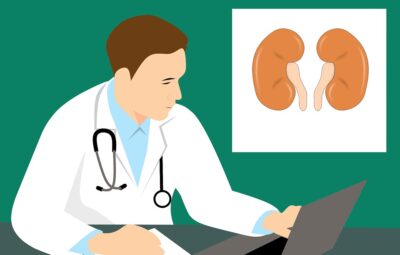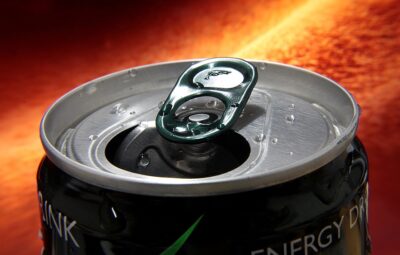We typically think of testosterone as the hormone that regulates male growth and sexual function. We identify estrogens as being central to regulating sexual and reproductive function, as well as a range of non-reproductive functions, in women. The primary form of estrogen, 17ß-estradiol, is also produced in large quantities by males.
Studies done in the last 20 years have shown that estrogen can have a big impact on male sexual drive, the ability to get erect, and sperm production. They can also affect how much body fat a person has, how strong their bones are, and their overall health. Estradiol is known to cause breast tissue growth and water retention in men with low testosterone. It’s important to regulate the balance of testosterone and estradiol in men. Although there is evidence that lower levels of estradiol (10-20 pg/ml) can increase bone loss, it is difficult to discern when the deleterious effects of high levels of estrogen begin to occur. The impact of high levels of estrogen on male reproductive function and other morbid conditions is complex. The effects of both a lack and an excess of estrogen are still being debated. We present here a background of estradiol in men, along with studies that highlight the importance of estrogen in male physiology.
Estradiol in Men: Background
The male testis has been known to be responsive to estrogen since the 1930s, and exposure to high doses of estrogen causes developmental abnormalities. Some speculated that males produce estrogen through the conversion of testosterone. This was not well documented until the 1950s. Males in multiple species produce estrogens, which was established in the following decades. These males also have circulating estradiol, which is synthesized in reproductive and non-reproductive tissues. In females, the ovaries are the main source of circulating estrogens, and they regulate many aspects of the female reproductive system. In males, approximately 20% of circulating estrogens are produced by the testes, with the remainder being produced by tissues such as adipose, brain, bone, and skin. These tissues convert testosterone to estrogens through the aromatase cytochrome P450. The production of estrogen in men is spread out and not concentrated in one area, making it difficult to create a state of estrogen deficiency in men that is similar to what happens in women who have their ovaries removed. Researchers have not been able to determine the role of estradiol and estrogen in the male body due to a lack of clear goals for estrogen and a lack of good experimental models.
In the 1970s, it was demonstrated that the testes were the major source of estrogens in men, which was a significant advancement in the field. The researchers used biochemical analysis to study the conversion of male hormones to female hormones, as well as protein labeling to study where estrogen receptors are located in the testicles. New developments in the ’80s and ’90s led to the hypothesis that estrogen and its alpha-receptor are “essential” for normal fertility. The implications of estrogen signaling in the male reproductive system became more interesting to people near the end of the century. Over the last two decades, work with genetically modified mouse models, and the discovery of natural mutations in men have helped researchers make major advances in understanding estrogen physiology in men. The findings of the studies showed that estrogens are essential for the proper development and functioning of both reproductive and non-reproductive organs in males.
Sex Steroids and the Male Libido
As was mentioned before, testosterone has historically been seen as the primary sex hormone in men. However, we now know that estradiol, which was previously thought to only impact women, also plays a key role in regulating libido, erection function, and sperm production. Although it is clear that the role exists, it is unclear to what extent it does. There are a lot of estrogen receptors and aromatase in organs that are important for sexual function, like the brain, penis, and testicles. Estradiol, therefore, can affect libido at multiple stages. Testosterone levels that are lower than normal have been linked with a decreased sex drive in men. If these men are given estradiol, their libido will improve.
While it is commonly thought that high levels of testosterone lead to high levels of estradiol, this is not always the case. In fact, sometimes high levels of testosterone can actually lead to low levels of estradiol. Male hypogonadism is a condition in which the body does not produce enough testosterone. Testosterone replacement therapy (or supplementation) can improve quality of life. More and more men are being prescribed testosterone therapy each year. Nowadays, testosterone therapy is more commonly used in patients with nonspecific symptoms, such as sexual function and fatigue, when testosterone levels drop below a certain point (2 standard deviations below the mean value for healthy young adults). The measure is helpful, but it does not address the changes in hormones that may occur in androgen deficiency.
Effect of Testosterone and Estradiol on Men’s Libido
In an innovative study to address these concerns, one group recruited healthy males to determine the point at which undesirable changes begin to occur with testosterone deficiency, estrogen deficiency, or both and whether these changes were androgen-dependent, estrogen-dependent, or a combination of the two.(Finkelstein et al. 2013) 2 groups of males (20 to 50 years of age) with normal testosterone levels were given goserelin acetate (to suppress endogenous testosterone and estradiol) and randomly assigned to receive varying amounts of 1% testosterone gel (0g, 1.25g, 2.5g, 5g, or 10g) for 16 weeks. An aromatase inhibitor was given to one group in order to lower the amount of testosterone that is turned into estradiol. During the 16-week period, researchers looked at changes in body fat percentage, lean mass, amounts of fat in different areas of the body, thigh muscle area and strength, and sexual function. The results of this study suggest that when estrogen production is normal, fat accumulation starts when testosterone levels are mildly deficient (around 300 to 350 ng/dL). However, lean mass, thigh-muscle area, and muscle strength were maintained until testosterone levels dropped below 200 ng per deciliter. Sexual desire remained unchanged, while erectile function declined in response to changes in serum testosterone reduction. There was a correlation between changes in lean mass, thigh-muscle area, and leg-press strength with testosterone levels. However, estradiol levels were associated with changes in fat measures. Both androgens and estrogens play a role in maintaining libido and erectile function.
Estrogen Balance Critical To Aging Men
Scientists tested estrogen blood levels in men, which showed that when estrogen levels are unbalanced, it increases the risk of degenerative disease in aging men. We were concerned 18 years ago about reports that showed estrogen contributes to the development of atherosclerosis. The suspicions were confirmed by human clinical studies conducted more than a decade later. If a man has even a small amount of estrogen in his system, he is twice as likely to have a stroke and much more likely to develop coronary artery disease.
We observed that men with benign prostate enlargement or prostate cancer had higher blood estrogen levels (and often low testosterone). Other clinical and laboratory studies after our initial observations helped support what we saw.
A lack of estrogen can lead to problems such as osteoporosis and bone fractures.
Almost all men today do not know what their blood estrogen levels are, which goes some way to explaining the high number of age-related illnesses that are causing financial problems for the country’s healthcare system.
Higher Mortality In Men With Unbalanced Estrogen
Despite studies being published in medical journals, conventional doctors often times ignore hard science.
A study that was published in the Journal of the American Medical Association measured the levels of blood estradiol in 501 men who suffer from chronic heart failure. Compared to men with a balanced level of estrogen, men with the lowest level of estrogen were 317% more likely to die during a three-year follow-up, while men with the highest level of estrogen were 133% more likely to die.
The men who had the lowest number of deaths had serum estradiol levels that fell between 21.80 and 30.11 pg/mL. The range that Life Extension recommends for aging men is virtually ideal.
The men in the highest quintile of death rates had 133% increased death rates, and their serum estradiol levels were found to be above 37.39 pg/mL. The group of people with the lowest levels of estradiol had a 317% increased risk of death. Their estradiol levels were below 12.90 pg/mL.
When estradiol levels are either too high or too low, it results in a dramatic increase in mortality rates for men. The study found a major problem in traditional medical care that can be fixed easily.
HOW MEN NATURALLY MAKE ESTROGEN
Most of a woman’s estrogen is produced in her ovaries and other reproductive tissues.
MEN produce estrogen through a process that transforms testosterone into estradiol with the help of the enzyme aromatase. This is necessary because men lack the female anatomy that produces estrogen.
More than 80% of estradiol in men’s bodies comes from testosterone, which has been changed into estradiol. As testosterone levels in the blood decrease, so can the levels of estradiol.
Aging men sometimes have too much activity of the enzyme aromatase, which causes the hormone testosterone in their bodies to convert to the hormone estradiol in excess. When this happens, it causes a depletion of important testosterone levels and a sharp increase in estradiol to unsafe levels.
Some men lack aromatase and suffer an estrogen deficit. Other men’s bodies produce such small amounts of testosterone that there isn’t enough to convert into estrogen. This causes low levels of both free testosterone and estradiol.
Fortunately, no matter what the underlying cause, aging men can easily achieve optimal testosterone and estradiol serum levels using inexpensive blood tests. These levels can then be maintained using simple, daily injections of testosterone.
Encouraging Findings From Massachusetts General Hospital Study
In a study conducted at Massachusetts General Hospital, men were given varying doses of a drug that suppresses testosterone for 12 weeks. They were given different amounts of testosterone cream to put on their skin for 16 weeks. The first group only received testosterone cream, while the other group received both testosterone cream and the drug that suppresses estrogen (anastrozole).
The doctors utilized some cutting-edge methods to gauge metrics like visceral fat, power, sinewy muscle, and erotic function. As mentioned earlier, scans were performed to determine lean mass as well as subcutaneous belly fat and visceral fat. The study enrolled men and used validated methods to determine their sexual function, physical function, vitality, strength, and overall health status.
In a group of men given a cream with the right amount of testosterone, there were clear signs of anti-aging effects.
In a group of men whose testosterone and estradiol levels increased, they experienced significant reductions in belly fat, as well as improvements in lean muscle, strength, and sexual function. The amount of testosterone in the blood that is optimal for health benefits falls in the range that has been advocated by Life Extension since 1996.
The group of men given testosterone plus anastrozole did not experience any of the benefits. These men experienced a decrease in lean muscle and an increase in belly fat. The men who achieved optimal levels of testosterone and estradiol had better sexual function and strength than the men who were overdosed on anastrozole.
Misinterpretation Of The Massachusetts General Hospital Study
The doctors who did the study at Massachusetts General Hospital talked about how bad the effects were for men who were given a really high dose of anastrozole.
The percentage of abdominal fat increased, and sexual desire and erectile function decreased in their estrogen-deficient study subjects. The doctors guessed that since too much abdominal fat is linked to diseases like diabetes and metabolic syndrome, the high levels of visceral fat in men given lots of anastrozole could be a sign that they will get the cardiovascular disease too.
Estradiol levels were artificially suppressed to levels not typically seen in the real world, which creates a problem. Since these men had very little estrogen, it’s not surprising that they experienced negative side effects.
This study found that men need both estrogen and testosterone to stay healthy, not just testosterone. It seemed as if a big discovery had been made based on how the media was talking about it, for example, a previously unknown function of estrogen in males. This is not a new finding!
Scientists found out that men need estrogen a long time ago, and studies of old men show that having too much or too little of it can be deadly.
The findings of this study suggested that doctors should be careful when prescribing estrogen-suppressing drugs to their male patients. The study subjects were given a high dosage of anastrozole, which caused their estradiol levels to drop very low.







